Beijing frequently criticises the U.S. of employing out-dated, zero-sum thinking in trying to contain and suppress China’s rise through the lens of “Cold War mentality”. As recently as June 2025, China denounced US Defense Secretary Pete Hegseth for calling the Asian country a threat, accusing him of touting a Cold War mentality – referring to the geopolitical tension between the U.S. and the Soviet Union that lasted 45 years.
To be fair, Donald Trump did not really wage a Cold War with Beijing. He is only interested in an Economic War with China. It was Joe Biden who actively engaged in a Cold War with China. In fact, Trump did not bother if China invades Taiwan tomorrow. It was him who said – “Taiwan is like two feet from China. We are eight thousand miles away. If they invade, there isn’t a fucking thing we can do about it.”
But Chinese President Xi Jinping does not care. Whether it was Mr Trump’s trade war 2.0 or Mr Biden’s Cold War 2.0, he is fighting a Cold War with America. Mr Xi is entering trade negotiations with a grand strategy he has prepared for years – one that, according to policy advisers in Beijing, is inspired by his understanding of what the Soviet Union got wrong during the first Cold War.
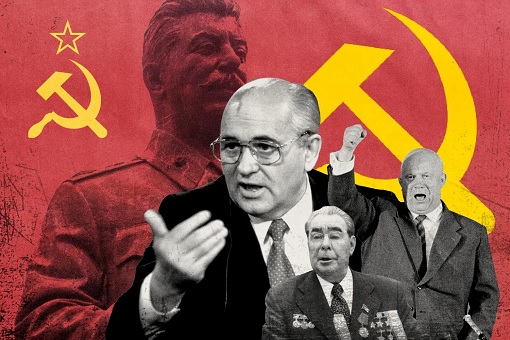
Well aware of the U.S.’s continued economic and military superiority, President Xi is seeking to avoid direct confrontation, while holding China’s ground in a protracted, all-encompassing competition. The Chinese leader aims to achieve what Mao Zedong used to call a “strategic stalemate” – an enduring equilibrium where American pressure becomes manageable and China buys time to catch up to the U.S.
“For China, ‘strategic stalemate’ is the most realistic and preferred outcome in the foreseeable future,” – said Minxin Pei, a Claremont McKenna College professor and editor of the quarterly journal China Leadership Monitor. “Strategic patience, conservation of resources and tactical flexibility will all be critical in achieving this stalemate.”
In some ways, Beijing is pursuing a sort of guerrilla warfare, sparked by Henry Kissinger’s analysis of the nature of asymmetric conflicts – “The conventional army loses if it does not win. The guerrilla wins if he does not lose.” Essentially, China doesn’t need to win – all it has to do is not to lose. Hence, Xi is avoiding direct confrontation, unifying his people, building up military, improving trade ties with other nations, and becoming as rich as possible.

This is exactly what Hamas, Hezbollah, Syria and even Iran were trying to do to win their wars against the Israelis. Hamas leader Yahya Sinwar, Hezbollah leader Hassan Nasrallah, and even Syrian president Bashar al-Assad were trying to win by not losing. They knew they can’t defeat Israel. However, all of them lost – either killed or fled to Russia. Now, it’s Iran Supreme Leader Ali Khamenei’s turn not to lose by not getting killed.
One key pillar of the lessons Xi has drawn from the Soviet collapse is economic – the Soviets put all their economic bets on heavy industry, focused on energy and weaponry. Beijing, meanwhile, is trying to produce everything, fortifying the Chinese economy against trade and technological restrictions from the U.S. while still leveraging world markets’ appetites for its goods.
Another pillar is geopolitical, where the goal is to avoid Soviet-style isolation. This involves weakening U.S. alliances while promoting what Beijing calls “multi-alignment,” where its foreign policy approach is to engage, maintain and cooperate with multiple global powers – both Western and non-Western nations – rather than committing to a single alliance or bloc.

Also key to the strategy is to continue China’s military buildup, but without Soviet Union’s mistake of a costly arms race with the U.S. The country’s official defense budget has grown at a stable rate of about 7.2% over the past three years. While that exceeds China’s overall economic growth, it is below 1.5% of its gross domestic product (GDP).
Xi often talks about the Soviet fall as a lesson for China. “Why did the Soviet Union disintegrate? Why did the Communist Party of the Soviet Union fall to pieces?” – Xi said in a closed-door speech to senior party officials in January 2013, shortly after he took the reins of the party. “An important reason is that in the ideological domain, competition is fierce.” Meaning – the party must allow no challenges to its authority.
{ Turning Point }
China is fortunate to be able to study the long history of the Soviets. In 1953, the year Xi was born, Chairman Mao launched a campaign to promote the Soviet model for China’s political, economic and military systems. Xi’s father, Xi Zhongxun, a party revolutionary who fought alongside Mao, went to Moscow in the late 1950s, at a time when China had almost no industry, to visit industrial sites and learn about their operations and technology.
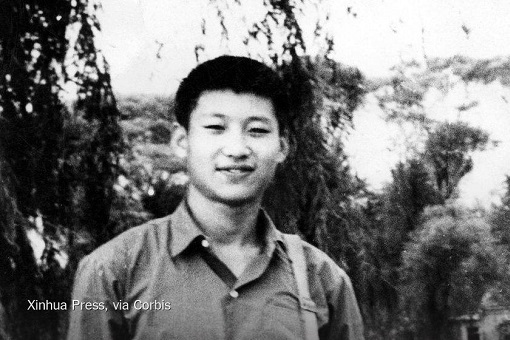
That profoundly shaped Xi’s youth, leading to a deep-rooted admiration for Soviet values, history and culture. But by the time Xi was a rising political star in the late 2000s, the Soviet Union had collapsed and his view quickly shifted. As head of the Central Party School, an elite party academy, he used the Soviet unraveling as a cautionary tale, highlighting ideological decay and a loss of political control as the key reasons for the collapse.
After taking power in 2012, Xi commissioned a documentary about the end of the Soviet Union that portrayed Mikhail Gorbachev, the last Soviet leader, as a villain who abandoned the party. But even then, Beijing’s study of the Cold War focused on how China could avoid a similar demise – Xi didn’t yet see China as a contender in a superpower clash with the U.S.
The turning point was Trump’s first-term trade war with China beginning 2018. His “Make America Great Again” or MAGA slogan demonstrated to Xi the United States’ determination to maintain its supremacy. As a result of Trump’s unpredictable tactics, the Xi leadership started a reassessment of the Cold War. The new focus – how to fight and ultimately win a Cold War against the U.S.
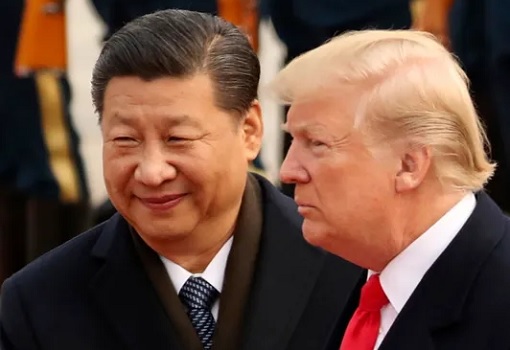
In 2020, when Trump used the Covid-19 pandemic to attack China and damaged bilateral relations, Xi trotted out the first major piece of his new Cold War strategy – under the vague label of “dual circulation” – produce domestically what China needed and send goods overseas – he kick-started an all-out effort to better insulate China from outside shocks, in particular from the U.S.
When Biden continued with Trump’s anti-China policies, Xi saw it even more urgent to fight a protracted conflict with America. That’s when Beijing more forcefully made clear it wanted to be treated as an equal of the U.S. and also, crucially, when it deliberately cozied up to Russia. In early 2022, right before the Russian invasion of Ukraine, Beijing and Moscow declared their friendship had “no limits.”
But Xi was careful not to blindly copy the Soviet playbook of fostering a largely isolated Eastern bloc. While he realized China might need to disentangle from the U.S., he was making sure the country wasn’t closed off from the rest of the world, keeping it integrated in the global economy, particularly with lower-income countries. In a way, BRICS, initially established to challenge the political and economic dominance of the G7 (or the West), plays a critical role.

To counter Western’s accusations that China has been trapping countries such as Sri Lanka and Zambia with predatory lending, Beijing has overhauled the trillion-dollar Belt and Road Initiative (BRI) program to make its lending more sustainable for recipients of Chinese financing. BRI aims to enhance connectivity and cooperation between China and countries across Eurasia, Africa, and Latin America.
“China’s economic and diplomatic policies are all oriented toward positioning themselves for a long-term struggle against the U.S.,” – said Evan Medeiros, a former senior national-security official in the Obama administration and now a professor at Georgetown University.
{ Buying Time }
Xi’s key strength is patience. The steady calm is intended to contrast with what Xi sees as U.S. chaos, Trump’s flip-flopping and his administration’s ever-shifting posture toward China. In just a few months, the White House has gone from applying maximum tariff pressure on China and trying to isolate the world’s second-largest economy to now seeking a broad deal with concessions on both sides.
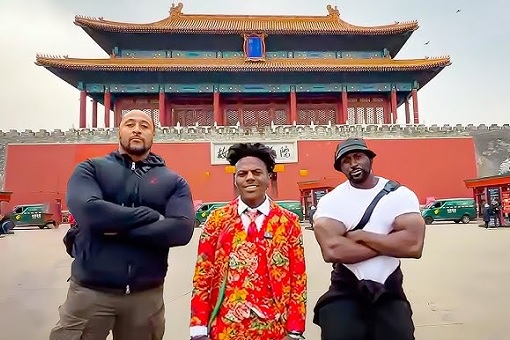
The best part is the Trump administration has dismantled the U.S.’s foreign-assistance agency, giving Beijing a chance to project itself at a time of heightened geopolitical competition. And while the U.S. has targeted Chinese student visas and is slashing operations such as Voice of America, the Chinese government is offering all-expenses-paid trips to American social-media influencers they hope will help promote a “cooler China.”
For example, American content creator IShowSpeed, who has more than 120 million social-media followers, handed Beijing a soft-power win when he visited China for 10 days in April. His widely viewed videos, which showed him marveling at the country’s high-speed trains and ubiquitous electric cars, became a global sensation. Using American celebrities to promote China was a clever tactic.
Trump was “Godsent” – while Beijing outlines a vision of openness and engagement, U.S. president Donald Trump champions a retreat into isolationism. This divergence presents a fertile ground for China’s soft power to flourish, filling the perceived vacuum left by a receding American presence. At the heart of China’s soft power strategy lies its burgeoning cultural industry.
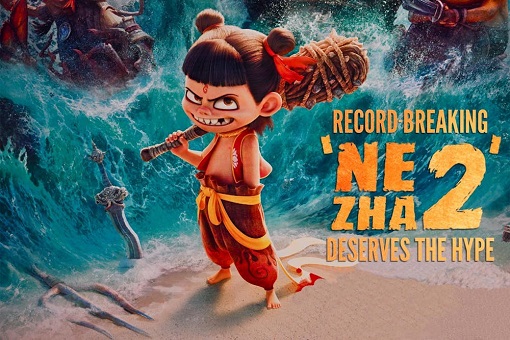
Chinese films, once confined to domestic audiences, are now garnering international acclaim like Hollywood. Blockbusters like “Ne Zha 2” and the international buzz surrounding “Black Myth: Wukong” video game demonstrate China’s growing prowess in animation and gaming, industries that resonate strongly with younger generations worldwide. Likewise, TikTok and Xiaohongshu are powerful digital platforms that projects China’s soft power.
China’s success speaks for itself. Russia could not afford a defense budget to keep up with the US, which China has started building its fourth “nuclear-powered” aircraft carrier – Type 004. Russia could no longer control its satellite countries, most of which are now in NATO and the EU by choice, because their people were unconvinced with its model, but many countries are rushing to join BRICS due to China’s economic prowess.
Of course, part of China’s success comes from its superior educational system, whereas American weakness in that area could ultimately cause major problems for the Americans. In addition to trade talks, Beijing wants to restore the kind of recurring “dialogue” Washington sees as a waste of time. To Xi, it’s a ploy to buy time. “They have every intention of playing hardball and dragging it out,” – said Pei of Claremont McKenna College.
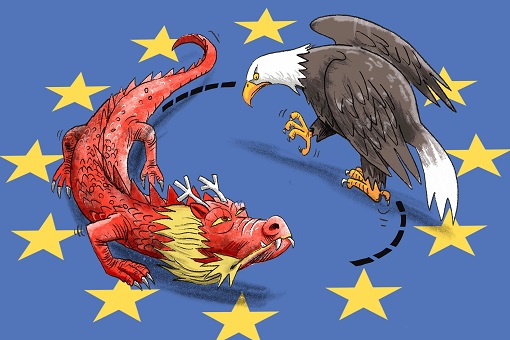
Other Articles That May Interest You …
- China Weaponise Rare-Earths Magnet – Why Trump Goes Crazy & Complains Xi Very Tough To Make Deal With
- China Too Strong For U.S. – Why Europe In Trouble As Trump Shifts Target To Bully EU With 50% Tariff Threats
- Art Of War vs. Art Of Deal – China Laughs All The Way To The Bank As Trump Slashes Tariffs From 145% To 30%
- Empty Store Shelves In 2 Weeks – Here’s Why Trump’s Damage Control Is Too Little Too Late, And It Will Be Ugly
- Trump Has Already Lost His Trade War Against China – But He Can’t Find Ways To Climb Down And Save Face
- White House Privately Begging Xi To Call Trump First – But China Slapped 125% Tariff Instead
- Beijing Raises Tariffs To 125% – American Goods No Longer Marketable In China
- Recession 2025 – Why You Should Prepare For A Historic Crash As Massive Correction Builds
- “Black Myth: Wukong” Makes $600 Million In 3 Days – But The West Is Very Pissed, Accused The Chinese Game Lack Diversity
- From Terminating Trade Deal To Cancelling $1.1 Trillion Debt Owed To China – Here’re Some Of Trump’s Crazy & Dirty Ideas
- Watch Out Trump!! – China May Weaponize “Rare Earth” To Retaliate Against U.S.’ Ban On Huawei

|
|
July 7th, 2025 by financetwitter
|


|

|

|

|

|

|



















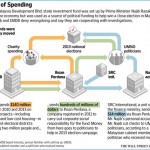







Comments
Add your comment now.
Leave a Reply